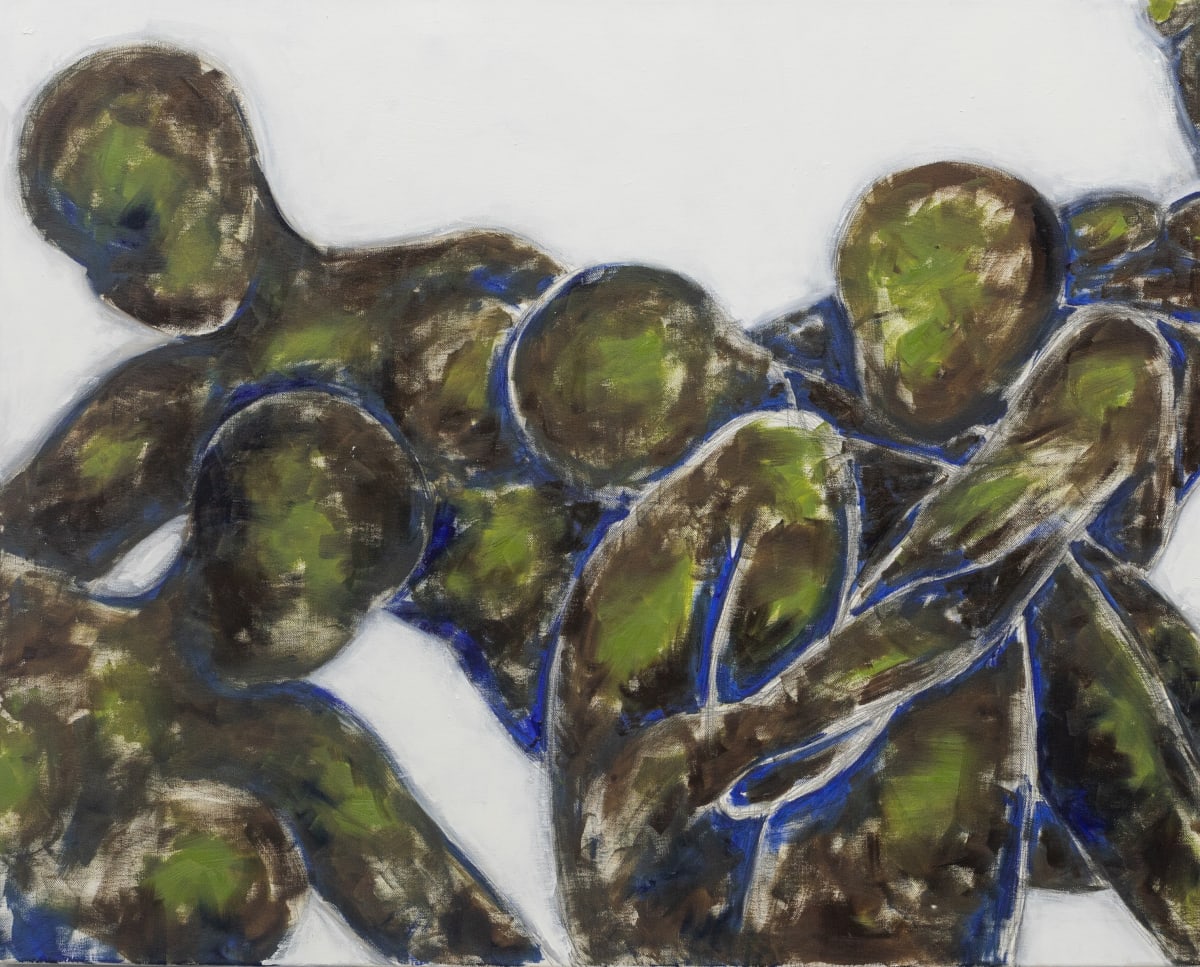Naila Opiangah Gabonese, b. 1994
The artist’s oeuvre straddles the line between abstraction and figuration. At first glance, the figures present appear to resemble Black women’s bodies. Likening her corps to the putti, the cherubim ubiquitous in European painting of the Renaissance, Baroque and Rococo eras, the artist sees them as a provisional lens. Like the putti, Opiangah’s corps are a stand-in for the entirety of humanity. Through colour and painterly gestures, Opiangah’s corps maintain an explicitly personal and political agency. They sit: in deep thought; at leisure; together entangled in tender embraces. In her refusal to offer the viewer the opportunity to behold their faces, the artist grants her corps a register of illegibility. In a time when the lives of Black people are increasingly surveilled through algorithms and the culling of datasets, Opiangah’s gesticulations toward anonymity feel like a generous gift of love and possibility. She wants to normalize truly seeing Black women - their bodies, their beauty, and everyday negotiations — without sexualizing or otherwise codifying them.
Story building is as important a human impulse as any other. If there is one thing we know about the stories we tell, and about history itself, it is that there is no such thing as an objective perspective. It is all shaped and coloured through the prism of the lives we each lead: our upbringing, education level, how healed our traumas may be, the people who have loved and nourished us and those who we have loved and nourished in return. The stories we hold teach us how to behave, and how to treat others. Often, it is an intensely fragile and granular operation. As many of the tales that have long been clung to unravel before our very eyes, Opiangah offers us a path to building something new. These works present a multi-faceted methodological framework: for the world to see Black women as they are: resplendent, worthy of repose - above all human, and a bridge toward the expansion of who is deserving of our empathy, and the shifting of our vision of whose humanity and bodily autonomy matters. The title of the exhibition, Two or Three Sides to the Same Story, is an allusion to the openness of interpretations in her tableaus. Each painting is carefully titled, offering a cue toward the artist’s intention. The corps are at once representative, specific and entirely up to the viewer to decipher. The intent, through her use of texture, painterly flourishes of ribbons of blue, green and brown tones, is to set a viewer “adrift in a sea of interpretations,” to call forward the wonder of new understanding, and the malleable nature of perspective. The artist’s process asks us to lean into the full spectrum of the human experience, beyond what is available to us through the lens of our own individual experiences.
-Curatorial Essay by Niama Safia Sandy
Naïla Opiangah (b. 1994, Libreville, Gabon) is an artist and writer working between New York City and Accra. In 2013, she moved to the US from Gabon to study architecture and design. She attended Chicago’s Harold Washington College and the Illinois Institute of Technology from which she graduated with a Bachelor of Architecture. While undergoing her architecture training, she started developing a strong interest in the drawing and painting of nude Black women. Her work today explores concepts of identity, self-assessment, and interpersonal relationships, through a more abstract depiction of nude Black women. Her paintings are primarily oil on diverse fabrics and watercolour on paper.



